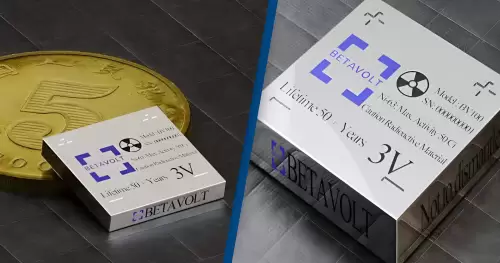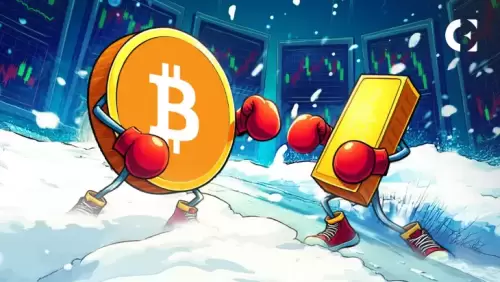 |
|
 |
|
 |
|
 |
|
 |
|
 |
|
 |
|
 |
|
 |
|
 |
|
 |
|
 |
|
 |
|
 |
|
 |
|
この記事では、ポルカドット、コスモス、雪崩、ソラナ、カルダノを並べて比較し、アーキテクチャ、トランザクション速度、コンセンサス、ブロック時間、および生態系を調査します。

Polkadot, Cosmos, Avalanche, Solana, and Cardano are some of the most promising blockchains in 2025, demonstrating each blockchain’s hundred paths to a solution to the blockchain trilemma, namely scalability, security, and decentralization. This article compares them side by side and explores their architecture, transaction speed, consensus, block times, and ecosystem.
Polkadot、Cosmos、Avalanche、Solana、およびCardanoは、2025年に最も有望なブロックチェーンの一部であり、各ブロックチェーンの100のパスをブロックチェーントリレマの解決策、つまりスケーラビリティ、セキュリティ、および分散化することを示しています。この記事では、それらを並べて比較し、アーキテクチャ、トランザクション速度、コンセンサス、ブロック時間、およびエコシステムを調査します。
Here is a quick at-a-glance comparison:
これは、順調な比較です。
Different blockchains excel in different categories:
さまざまなブロックチェーンが異なるカテゴリで優れています:
Diving into the full comparison below to see which blockchain wins in each category in 2025!
2025年の各カテゴリでどのブロックチェーンが勝つかを確認するために、以下の完全な比較に飛び込んでください!
1. Blockchain Structure: Monolithic vs Multi-Chain – Who Does It Best?
1。ブロックチェーン構造:モノリシックvsマルチチェーン - 誰が最適ですか?
When it comes to modern blockchain construction, the ways in which they are built under the hood is arguably their biggest differentiation. Some blockchains embrace simplicity through what is called a monolithic approach, which means a single chain does all of the heavy lifting. Other blockchains choose a multi-chain or modular approach, which in turn means many chains working in unison, each one used for different roles.
現代のブロックチェーン構造に関しては、それらがボンネットの下に構築される方法は、間違いなく彼らの最大の差別化です。一部のブロックチェーンは、モノリシックアプローチと呼ばれるものを通してシンプルさを受け入れます。つまり、単一のチェーンがすべての重い持ち上げを行います。他のブロックチェーンは、マルチチェーンまたはモジュラーアプローチを選択します。これは、それぞれが異なる役割に使用される多くのチェーンが一斉に作業することを意味します。
In this section, we will describe the architecture of Polkadot, Cosmos, Avalanche, Solana and Cardano – illustrating their unique approaches to multi-chain technologies and how each relates to scalability, performance and flexibility.
このセクションでは、Polkadot、Cosmos、Avalanche、Solana、Cardanoのアーキテクチャについて説明します。マルチチェーンテクノロジーに対する独自のアプローチと、それぞれがスケーラビリティ、パフォーマンス、柔軟性にどのように関連するかについて説明します。
Architecture Comparison Table
アーキテクチャの比較表
Polkadot the Multichain Powerhouse
ポルカドットマルチチャインパワーハウス
Polkadot is designed to embody a polylithic blockchain architecture. This means it has a Relay Chain enabling multiple parallel processing parachains.
Polkadotは、Polylithicブロックチェーンアーキテクチャを具体化するように設計されています。これは、複数の並列処理パラチェーンを可能にするリレーチェーンがあることを意味します。
Each parachain is its own blockchain, however all parachains plug into Polkadot’s Relay Chain which manages security and finality, hence by distributing the work across many parachains, each of which can have parallel processing, Polkadot can theoretically handle millions of transactions per second.
各パラチャインは独自のブロックチェーンですが、すべてのパラチャインはセキュリティと最終性を管理するポルカドットのリレーチェーンに接続します。したがって、それぞれが並行処理を行うことができ、ポルカドットは1秒あたり数百万のトランザクションを理論的に処理できます。
Polkadot 2.0 is also introducing Elastic Coretime which is an optional term for developers to hire a flexible amount of space on the network – important for on-demand scaling.
Polkadot 2.0は、開発者がネットワーク上に柔軟な量のスペースを雇うためのオプションの用語である弾性コレチタイムも導入しています。これは、オンデマンドスケーリングにとって重要です。
👉 Learn more about the architecture of Polkadot 2.0.
polkadot 2.0のアーキテクチャの詳細をご覧ください。
Cosmos: the Internet of Blockchains
コスモス:ブロックチェーンのインターネット
Cosmos employs a similar multi-chain approach but instead of a single Relay Chain, Cosmos features a Cosmos Hub enabling many independent zones (blockchains) to operate through the IBC Protocol (Inter-Blockchain Communication Protocol).
Cosmosは同様のマルチチェーンアプローチを採用していますが、単一のリレーチェーンの代わりに、CosmosはCOSMOSハブを備えており、多くの独立したゾーン(ブロックチェーン)がIBCプロトコル(ブロックチェーン間通信プロトコル)を介して動作できるようにします。
Zones operate in complete sovereignty, with their own validators, rules, and governance, while simultaneously allowing for token and data transfers anywhere in the ecosystem.
ゾーンは、独自のバリデーター、ルール、ガバナンスを使用して、完全な主権で動作し、同時にトークンとデータがエコシステムのどこにでも転送されます。
👉 Explore the Cosmos Ecosystem.
cosmosエコシステムを探索します。
Avalanche: Subnets for Customization
雪崩:カスタマイズのためのサブネット
Avalanche has adopted a multi-chain model as well; where they allow subnets.
Avalancheはマルチチェーンモデルも採用しています。サブネットを許可する場合。
By default, Avalanche contains three chains (X-Chain handles assets, C-Chain handles EVM smart contracts, and P-Chain handles metadata), but they also allow for the launching of custom subnets by anyone on the EVM and Avalanche protocols.
デフォルトでは、Avalancheには3つのチェーン(X鎖ハンドルアセット、CチェーンハンドルEVMスマートコントランス、P-Chainハンドルメタデータ)が含まれていますが、EVMおよびAvalancheプロトコルの誰でもカスタムサブネットを発売することもできます。
Subnets are flexible; they can be public, private, or even regulatory-compliant and enable any and all of the capabilities of the Avalanche consensus (called Snowman); which fast tracks improvement for developers and organizations working in the Avalanche ecosystem.
サブネットは柔軟です。彼らは公的、または規制に準拠していることさえあり、雪崩コンセンサスのすべての能力(雪だるまと呼ばれる)を可能にすることができます。雪崩エコシステムで働く開発者と組織の改善を迅速に追跡します。
👉 More about Avalanche subnets.
avalancheサブネットの詳細。
Solana: The High Speed Monolithic Beast
ソラナ:高速モノリシックビースト
Solana does it a little differently. Instead of a multichain or subnets, Solana is pure monolithic.
ソラナはそれを少し違った方法で行います。マルチチャインやサブネットの代わりに、ソラナは純粋なモノリシックです。
In fact, everything in Solana is done on a single chain, but due to Solana’s way of implementing Proof of History (PoH) and then Tower BFT as a design, Solana can do parallel-processing within one chain.
実際、ソラナのすべては単一のチェーンで行われていますが、ソラナの歴史の証明(POH)を実装し、その後BFTを設計として導入する方法により、ソラナは1つのチェーン内で並列処理を行うことができます。
This simplicity is one reason Solana is so incredibly fast and cheap, but that also means the network is forced to use the same chain for everyone’s activity, causing congestion during peak use times.
このシンプルさは、ソラナが非常に高速で安価である理由の1つですが、それはネットワークがすべての人のアクティビティに同じチェーンを使用することを余儀なくされ、ピークの使用時間中にうっ血を引き起こすことを意味します。
👉 See how Solana works.
solanaの仕組みをご覧ください。
Cardano: Secure and Monolithic by Design
カルダノ:デザインによる安全でモノリシック
Cardano is also a monolithic blockchain architecture, however it is focused heavily on security, formal methods and sustainability.
カルダノはモノリシックなブロックチェーンアーキテクチャでもありますが、セキュリティ、正式な方法、持続可能性に重点を置いています。
Unlike others discussed, Cardano builds on 2 separate layers (Settlement Layer and Computation Layer) both of which operate on 1 chain.
議論された他の人とは異なり、カルダノは2つの別々のレイヤー(決済層と計算層)に構築されます。どちらも1つのチェーンで動作します。
Cardano does not utilize built-in sharding or parachains, however Cardano is also working on developing Layer 2 solutions like Hydra for off-chain scaling with a clean main chain.
Cardanoは組み込みのシャーディングやパラチャインを使用していませんが、Cardanoは、クリーンなメインチェーンでのオフチェーンスケーリング用のHydraなどのレイヤー2ソリューションの開発にも取り組んでいます。
👉 Cardano’s official documentation.
Cardanoの公式文書。
Ranking: Top blockchain architectures for flexibility / scalability
ランキング:柔軟性 /スケーラビリティのためのトップブロックチェーンアーキテクチャ
2. Transaction Throughput (TPS): Which Blockchain Is the Fastest?
2。トランザクションスループット(TPS):どのブロックチェーンが最速ですか?
When discussing blockchain performance, transaction throughput (TPS) is easily one of the most discussed metrics. TPS is important because it reflects how many transactions a blockchain can execute per second, and that is important for user experience, DeFi, gaming, and any real world application that requires high speed settlements.
ブロックチェーンのパフォーマンスについて議論するとき、トランザクションスループット(TPS)は、最も議論されているメトリックの1つです。 TPSは、ブロックチェーンが毎秒実行できるトランザクションの数を反映しているため重要です。これは、ユーザーエクスペリエンス、DEFI、ゲーム、および高速和解を必要とする現実世界アプリケーションにとって重要です。
That said, TPS isn’t the whole picture, it is also crucial to recognize if the TPS speeds are theoretical maximums or actual real world performance.
とはいえ、TPSは全体像ではなく、TPS速度が理論的な最大値か実際の現実世界のパフォーマンスであるかを認識することも重要です。
Let’s breakdown Polkadot, Cosmos, Avalanche, Solana and Cardano
ポルカドット、コスモス、雪崩、ソラナ、カルダノを分解しましょう
免責事項:info@kdj.com
提供される情報は取引に関するアドバイスではありません。 kdj.com は、この記事で提供される情報に基づいて行われた投資に対して一切の責任を負いません。暗号通貨は変動性が高いため、十分な調査を行った上で慎重に投資することを強くお勧めします。
このウェブサイトで使用されているコンテンツが著作権を侵害していると思われる場合は、直ちに当社 (info@kdj.com) までご連絡ください。速やかに削除させていただきます。



























































